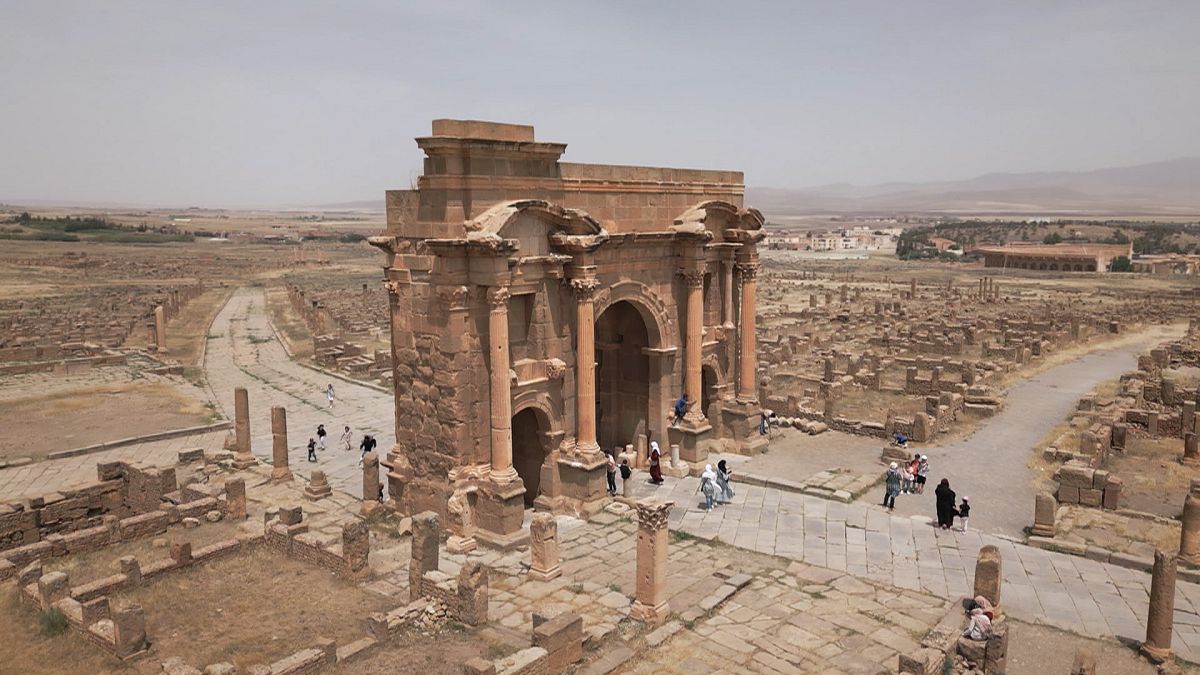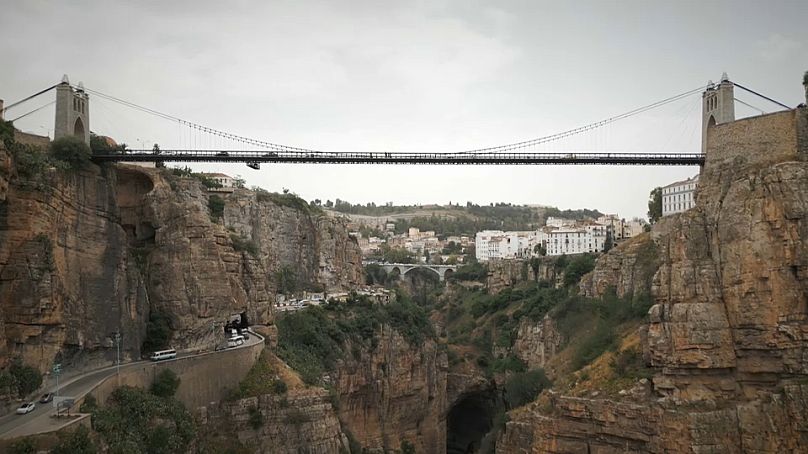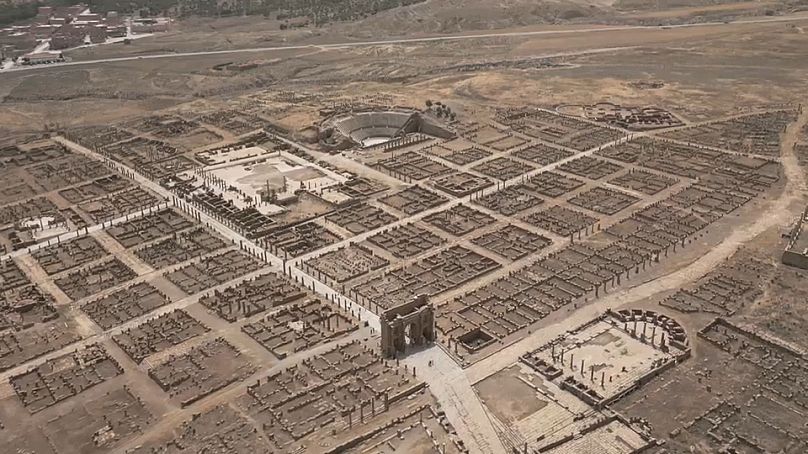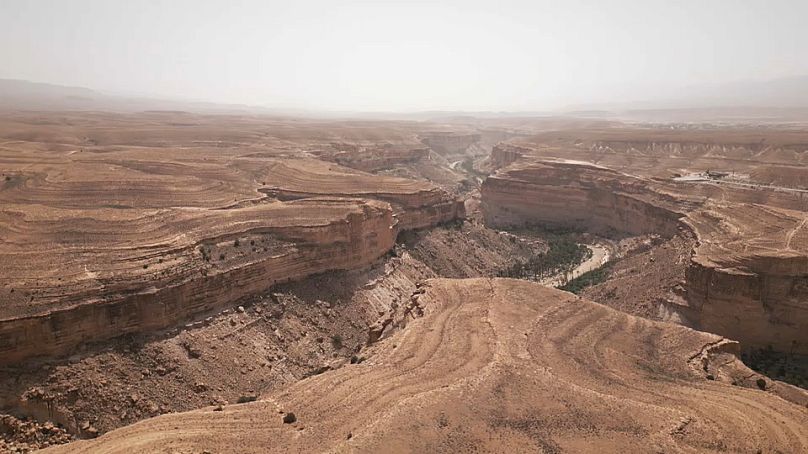Constantine in eastern Algeria is one of the oldest cities in the world. A crossroads of civilisations, Euronews explores the ancient city, as well as the beautiful Roman ruins of Timgad and the stunning Ghoufi Canyon.
Constantine in eastern Algeria is one of the oldest cities in the world. Known as the city of 'hanging bridges' it is believed the Roman emperor 'Constantine the Great' said that it was the only place in the world where man is higher than an eagle.
The city's architecture offers a journey through time and is located next to some of Algeria's most important Roman ruins.
In Constantine's lively and colourful Medina, some of the houses are thousands of years old.
"We are talking about a city that was the capital of a Numidian kingdom at the end of the second millennium BC. Its power extended from the current Moroccan border to the current Libyan border," explains local archaeologist, Dr Hocine Taoutaou.
"In the city of Constantine, one can read history just through its archaeological remains, its housing, its urbanism. Everything is there, everything is preserved," he adds.
Hidden gem
Hidden away from the bustling old town, are the gardens of the Amhed Bey Palace, a jewel of Arab-Muslim art.
A 2,000 square metre polychrome display details the travels of Ahmed Bey, a resistance figure against French colonialism.
"The Palace was built in 1826 by Ahmed Bey, the last Bey of the Beylicat of Eastern Algeria. The architecture is in the local Moorish style. It contains four pavilions and two gardens, the garden of palm trees and the garden of orange trees," says Meriem Kebailia, Director of the National Public Museum of Arts and Traditional Cultural Expression.
Visitors to Constantine can also take in the Emir Abdelkader Mosque, a masterpiece of African Islamic architecture with a 15,000 capacity. Its minarets are more than 100 metres high.
Africa's Pompeii
South of Constantine near Batna, in the Aurès mountains, lies the ancient city of Timgad.
A marvel of Roman town-planning, the UNESCO site is often described as Africa's Pompeii.
"Here, visitors can stroll through time. They can go through the thermal baths, the library, arriving at the forum. They literally experience the past," says Asma Ghenam, Head of Heritage for Batna's Directorate of Culture.
Many objects and mosaics are still beautifully preserved. Today, these can be found in the Timgad's museum, offering an insight into the wonder of this ancient city which was a home for retired Roman soldiers.
"There is an inscription here in the forum that sums up life in Timgad, which reads 'Lavare, Venari, Ludere'. Hunting, bathing and playing. This was the good life for those who had given to the Roman Empire," says Ghenam.
Ghoufi canyon
A hundred kilometres further south, at the gateway to the Sahara, is one of the country's most beautiful tourist sites: the majestic Ghoufi canyon.
The area offers breathtaking views crafted by nature, as well as hundreds of cave houses that seem to defy time.
The more athletic can enjoy a hike down the canyon, along a river strewn with fruit trees, once cultivated by the local population.




